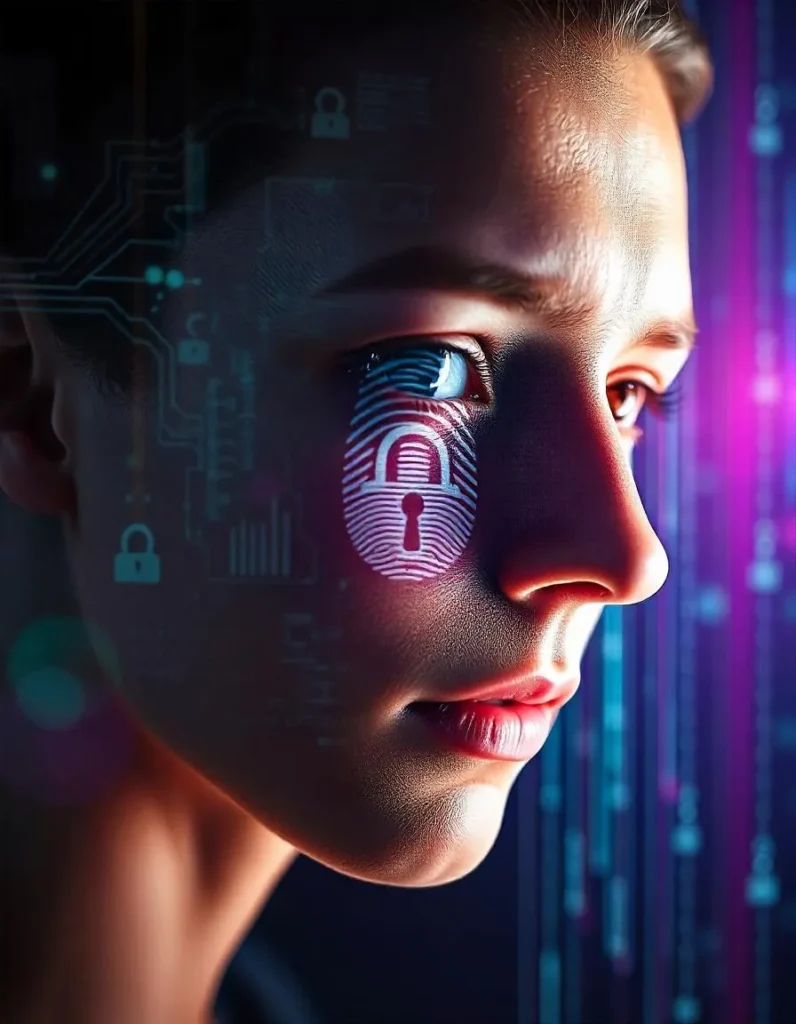Biometric data is revolutionizing the security of the physical as well as the virtual world but how secure is it? With the development and enhancement of technology today, a new form of identity theft includes our fingerprints, eye, and face scans as well as our voice. Think about the future where one’s identity is an excellent password, but also an open door for hackers and scammers. Due to the increased use of biometric systems in many fields, there is a need to know things that are at risk.
Are you ready for some privacy invasion? This blog post examines the realities of biometric data emphasizing the ways it is gathered, preserved, and possibly utilized. Gather the crew for Justice, grab your data protection hats, and let’s figure out what’s going on out there…
Biometric Data: What Is It and How Is It Collected?
Biometric identifiers include the special biological or behavioral features used to authenticate persons. These include fingerprint, facial, iris, and voice patterns. Here’s how this data is typically collected:
- Physical Biometric Collection: Fingerprint scanners, facial identification cameras, iris scanners – all of these use biometric traits.
For example, Smartphones have shown integrated sensors to identify fingerprints and security systems identify facial scans.
- Behavioral Biometrics: Such include monitoring of a person’s activities, writing style, speech volume, and even walking manner.
For instance, in the financial industry, voice recognition is applied to identify the customer when doing transactions through a telephone call.
- Mobile and Internet of Things (IoT) Devices: Some home assistants, smart doorbells, and even some cars include biometric authentication in their systems now. This results in more points where valuable information can be collected thus acting against privacy.
- Healthcare and Security: Biometric information is mostly applied in patient identification in healthcare and the identification of individuals by authorities and military services.
The Biometrics principle normally entails capturing the biometric trait, digitizing it, and using it for validation. This data is often encrypted but unfortunately, they still hold some level of risk.
How and Where Is Biometric Data Stored?
To determine the risks for privacy the specific storage method of biometric data has to be examined.
- On-Device Storage: The vast majority of contemporary smartphones and IoT devices store biometric data on local operating systems. This eliminates overall breaches because the data does not transverse the device.
For example, Apple introduced the Secure Enclave and similar hardware solutions for Android to provide device-specific storage, which encrypts and isolates the data.
- Cloud-Based Storage: In some cases such as in large businesses or governments, biometric information may be backed on the cloud. This makes it possible to extend access to the data but at the same time, it causes certain threats connected with the violation of the data’s integrity, if their storage is concentrated in one place.
- Blockchain-Based Solutions: There is increasing demand to decentralize biological data using blockchain technology. This makes it more secure relative to the former method since it is difficult for hackers to get hold of the data in one place. Web-based security utilizing blockchain biological and biometric frameworks is growing ubiquitously in business and health sectors because of the secure and private property conditions.
- Biometric Templates vs. Raw Data: Whereas in some systems raw images or voice clips are probably stored, more of them convert the biometric data into mathematically derived templates. These templates serve the function of being rather specific numbering systems that cannot be very efficiently tampered with or counterfeited.
How is Biometric Data Being Used?
Biometric data has expanded beyond personal device security to play a significant role in various industries:
- Finance & Payments: With the rise of digital banking, financial institutions now use biometric verification for mobile banking apps, ATM withdrawals, and online transactions.
For example, Mastercard reports a 30% increase in the adoption of biometric-based payments in 2023.
The transition of this technology is intended to improve the security and convenience of the users but provokes questions regarding data processing and security.
- Government Identification Programs: Biometric data is widely used in government-issued IDs, including passports, driver’s licenses, and voter registrations. In India, the Aadhaar system, the world’s largest biometric ID system, has enrolled over 1.2 billion citizens. Hearing has been described as easier to access compared to seeing has it however been criticized for the negative issues of privacy.
- Healthcare Systems: Hospitals and clinics are implementing biometric verification for patient identification, improving healthcare delivery. According to a 2024 survey by HIMSS, 48% of healthcare providers in the U.S. have adopted biometric systems for patient identification.
- Workplace Access & Surveillance: Companies use biometric systems to control access to buildings, secure sensitive areas, and even monitor employee attendance. This brings a number of questions concerning employee’s privacy and their consent to data collection and use.
Biometric Data Privacy Risks and Concerns
While biometric data provides greater security and convenience, it also poses significant privacy risks:
- Irreversible Data: Unlike passwords, biometric data can’t be changed. If compromised, individuals can’t simply alter their fingerprints or facial features, making the consequences of a breach more severe.
- Government Surveillance: In many countries, biometric data is shared with government agencies. This has created discourses over possible mass surveillance in which individuals’ movements may be monitored without their knowledge.
- Cybersecurity Threats: Despite advancements in encryption and security, biometric data is not immune to hacking. In 2023, the Biostar 2 breach exposed millions of fingerprints and facial scans due to insecure database configurations. That is why it becomes extremely important to have even more effective protection of such services.
- Third-Party Misuse: Companies that collect biometric data may share or sell it to third parties, often without users’ explicit consent. This raises ethical questions, more so where the privacy laws are still Alfred in some geographic areas.
How to Protect Your Biometric Data
- Enable Two-Factor Authentication (2FA): Always pair biometric authentication with another form of security, such as passwords or SMS codes, to strengthen protection.
- Review Privacy Policies: Before using apps or devices that collect biometric data, carefully read their privacy policies. Ensure that the company follows industry standards for data protection and does not share data with third parties without consent.
- Use Trusted Devices Only: Stick to well-known brands and systems for biometric authentication. These companies usually have more robust security measures in place to protect data.
- Limit Permissions: Be cautious when granting apps permission to access biometric data. Only allow access when necessary, and avoid sharing data with apps that seem suspicious or lack transparency.
Global Demographics and Insights
The adoption of biometric data varies globally:
- North America: The U.S. leads in biometric technology adoption, with over 70% of Americans using biometric authentication on mobile devices, according to Statista.
- Europe: Striking privacy and security measures of biometric data are explained in GDPR regulations, but the usage of biometric technologies rises in various domains, such as banking and healthcare services.
- Asia-Pacific: Countries like China, Japan, and India have seen the fastest growth in biometric systems, fueled by governmental programs and widespread smartphone use.
- Africa & Latin America: Biometric systems are expanding rapidly due to their use in national ID programs, financial services, and border security.
Conclusion
As much as biometric data is the security answer it does come with a trade-off in your privacy aspect. Thus, although it is more convenient and safer, clients should know the dangers and prevent the loss of their data. Knowledge about how biometric data is collected, processed, and used can help to enhance peoples’ ability to protect their privacy. And so as this technology develops or advances, likewise should the security measures taken over it.



